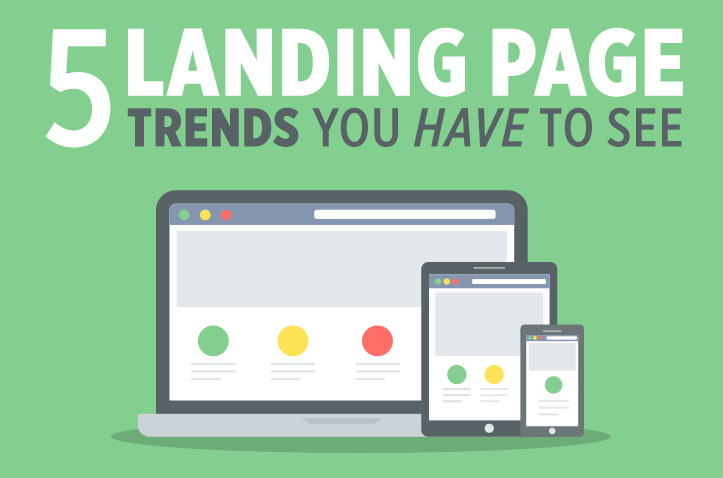I love me some landing page data, I mean who doesn’t?! Well if you’re anything like me then you can’t miss this report by my friends at Crayon.
Crayon analyzed 1,068 landing pages from 689 companies across 30+ industries from January 1, 2016 – December 31, 2016 and reported their findings in this report. Here’s a link to it!
After reading through this beast, I wanted to share a few of the major takeaways and apply what they learned with my own experience optimizing landing pages.
So let’s dig in!
Contents
Trend 1: More Content on Landing Pages
There’s been a constant debate between the use of short form content and long form content on landing pages. Well why bother debating it when you can see what everyone else is doing.
The average landing page has 2,106 words on it! To be honest, I was very surprised by this number.
2000 words is a lot…this post is likely around 2000 words! Now take the content from this post and stylize it on a page to persuade people to take an action. That’s going to create a pretty massive page!
What’s more interesting is that more than half of all the landing pages they monitored had more than 1000 words on the page.
This shows a pretty big move away from the traditional squeeze page. Not sure what a squeeze page is? Well it’s pretty much an island of reduced content that is focused on getting you to click a single button. Here’s an example of the traditional

Now just because people are using more content and moving away from the squeeze page doesn’t mean you need to put 2,000 words on your next landing page.
Here’s an example of a landing page we use at TruConversion. There’s ~400 words on this page and it converts at over 50%!

The amount of content on the page is directly proportional to three main factors:
- The value of your offer
- The complexity of the offer
- The relationship of the visitor to the brand
If you have high value, low complexity, and your brand has built up brand equity with the visitor then you can use a relatively short page.
However, if you have a complex offer you’ll have to spend more time explaining the nuances (and boosting that word count).
As interesting as this trend is, don’t use it as a litmus test for your landing pages. Use this benchmark in context to your audience and your offer before you make some radical changes!
Trend 2: Video Is Less Common on Landing Pages Than You Think
Video is an incredibly effective way to get a message across. You get to use visuals to demonstrate use & value, build out a narrative, connect to your audience, and make a final pitch.
Despite the power of video only 14% of landing pages actually used videos and the highest trafficked sites used videos even less at 6%.
At TruConversion we tend to use video a lot for training purposes and for post registration offers and upsells. However, we have the benefit of having 2 dedicated video producers.
I fully realize that most small companies don’t have these types of resources and even larger companies may not give video producer access to the marketing or acquisition team.
Even though video is powerful there are also some other pretty big drawbacks:
- Not easy to edit after launch (like copy or images)
- It’s heavy media. In other words videos take time to load and landing page optimization always comes down to page speed (especially on mobile)
- It’s a long process to produce a video. You need a script (or at the very least talking points), to shoot the video, edit the video, and render the video. This is a lot of work for a single element on a landing page!
Historically we’ve found that it is more effective to use video on people who have interacted with your brand. We generally avoid videos on landing pages we drive paid traffic to, but ALWAYS use video on the thank you page.
Just because people weren’t using videos on the landing page doesn’t mean it’s either not effective or not being used at all. In most cases it just doesn’t make sense at that point in the customer journey!
Curious about this whole ‘Customer Journey’ thing? Here’s a way more detailed explanation (get ready this is a big one).
Trend 3: Ain’t Nobody Using Native App Login on Landing Pages
When you get to a landing page, especially a lead generation landing page, you expect to type in some information, e.g., name, email, company, etc…
It is generally a bit of a surprise to see any other method of ‘opting in’. In fact, only 2% of landing pages offer some kind of native app login via sites like Facebook or Google.
Some companies do this very effectively:

But most avoid it entirely.
Years ago I saw an interesting split test where Unbounce tested the opt-in method. They had three variations:
- Tweet for the ebook
- Email for the ebook

During the test, Unbounce found that the email variant outperformed the tweet variation by 24%.
Overall, you want the opt-in method to be familiar (and safe) for the visitor and useful for you! Giving up content for a tweet helps to open a viral loop but doesn’t give you a way to reach out to that person later on!
If you’re using native app logins you also are at the mercy of the third party. They won’t share all of the information with you and could change their policies at any moment.
Overall this stat wasn’t a surprise and I don’t really seeing it change anytime soon (despite the ubiquity of social media accounts).
Trend 4: Landing Pages Commonly Use Subdomains
One of the main issues people don’t create landing pages is that it requires development resources. You need to get with a designer to create the initial design, get approval, get the page coded, QA the page, then you’re ready to send traffic.
That’s a lot of work for a single landing page! Sure if you only need one landing page that’s not a problem but what happens when you start creating an individual landing page for each ad or each campaign? Well, you end up in the weeds!
This is why organizations of all sizes have embraced landing page builders like Instapage, Leadpages, and Unbounce.
When you eventually publish these pages, you generally end up publishing them on a subdomain, e.g., pages.truconversion.com.
In this study Crayon found that 61% of all the pages they looked at were on a subdomain and the highest trafficked sites had 70% of their landing pages on subdomains.
Clearly, the use of subdomains is a way to get around development time and other page launch red tape.
So why the heck does this matter Justin?!
Since so many organizations are using subdomains they will become more common place. When things become common place they become expected and when things are expected they are accepted.
Don’t feel the need to avoid subdomains because it doesn’t fit with your original URL schema on your site. Landing pages are ‘conversion islands’ they should eventually link back to your home page but they shouldn’t be considered a part of your site proper.
In the report, Crayon identifies the top 10 subdomains they found but as a bit of a spoiler here are the top 3:
- Go
- Info
- Pages
We use ‘pages’ at TruConversion. Let me know what you use in the comments!
Trend 5: People Don’t Redesign Landing Pages
This finding was by far the most shocking for me and will hopefully change by the time there is a new trend study.
Only 11% of landing pages were redesigned last year. That’s an obscenely low number!
Just because you have a landing page doesn’t mean it’s going to perform well or is preforming optimally. When you launch a brand new landing page, it’s in your best interest to make iterative changes based on Customer Behavior Analytics or run split tests on more ambiguous concepts.
Once you launch a landing page expect the conversion rate to diminish over time. The only way to maintain or lift conversion rates is to update the page based on your quantitative and qualitative data.
If you are running iterative tests and updating your landing pages regularly then you have a major competitive edge. Landing pages are one of the best ways to transition traffic into leads or leads into customers. Your page should never be ‘set and forget!’
Protip: Try out new landing page designs to change up the experience. After you have a winning design run minor iterations until you don’t see any meaningful lifts. Keep this page until the conversion rate diminishes and restart the process.
Final Thoughts
These were some of the biggest takeaways in the trend report, but there are some other important stats that I didn’t want to spoil for you here. Go take a look and see how your pages stack up to these data points.
Oh! If you’re looking to redesign your landing page (unlike 1% of all previously published pages out there) I recommend taking a look at our Perfect Landing Page Blueprint. We identified 12 of the most important elements on your landing page and how you can leverage them to boost leads and sales.



